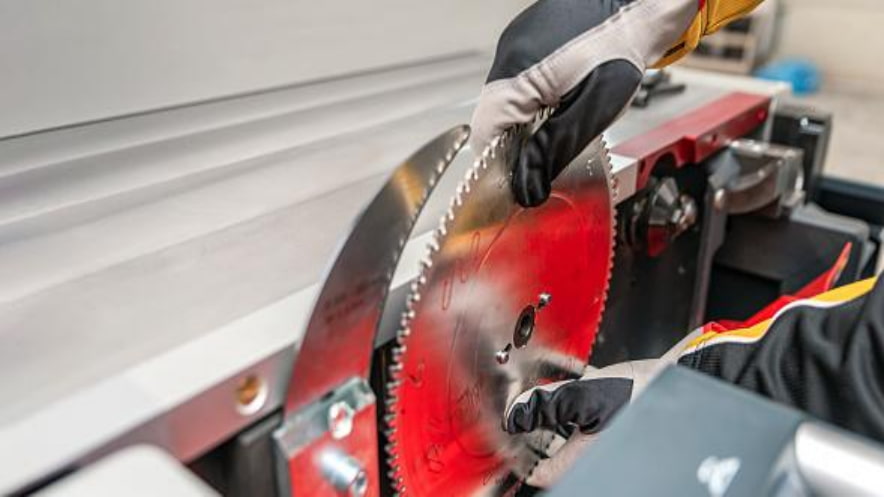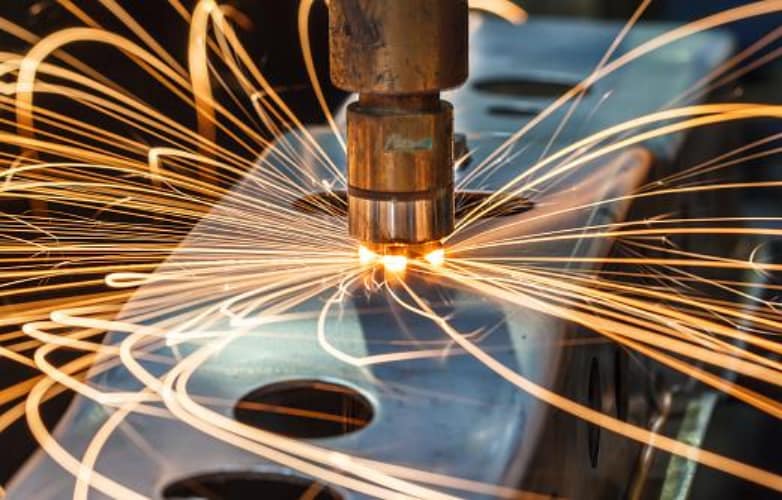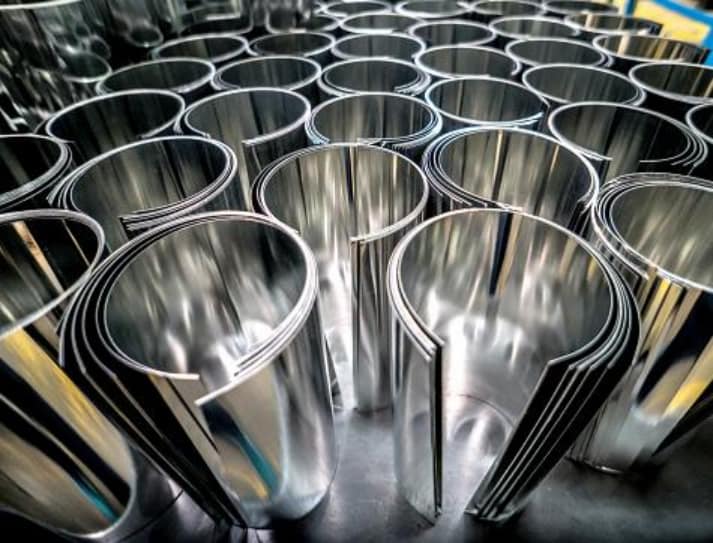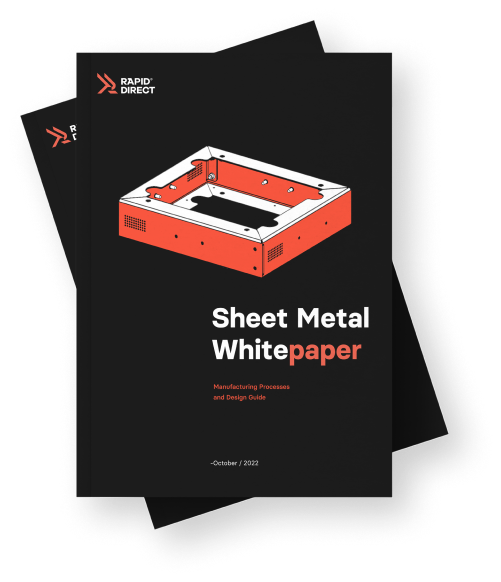Sheet metal fabrication is one of the most popular fabrication processes in prototyping. It helps to create several durable parts, ranging from prototypes to high-volume production parts. With many commercial benefits, many industries turn to this process for their applications. However, the sheet metal fabrication cost is usually a bone of contention for product developers.
Every aspect of a sheet metal fabrication project comes with an associated cost — the design, possible prototype, finishing processes, and others. Asides from the process itself, materials also cost money. Therefore, it is crucial to have a cost-saving plan to get the best out of your sheet metal project.
This article has compiled the various factors that affect sheet metal fabrication costs and the various tips to reduce the costs. Before then, let’s discuss estimating sheet metal fabrication costs.
Cost Estimation of Sheet Metal Products
Today’s competitive markets require a sufficient understanding of cost structure for an adequate pricing strategy. There are several phases in the production cycle of sheet metal parts, including cutting, bending, roll forming, punching, welding, and more.

We will discuss a sheet metal fabrication cost calculator using simple ideas and concepts.
Step 1: Break Down the Production Cycle
Product development involves various cycles, and production cycles often vary from one application to another and may have different phases. Thus, we need to break down the cycle into simpler processes. This way, we can focus on one cycle at a time.
Step 2: Calculate the Cost of Raw Materials
Manufacturing products involves one or more raw materials. For instance, a drywall stud will require metal coils, timber tiles, and straps. This, we need to estimate the number of materials needed to create a single product.
The sheet metal fabrication cost calculator estimates the raw material cost per one piece of the product by:
Volume x Material Density x Material Cost by Kg = Raw Material Cost
Assuming $0.8 per kg is the material cost with a steel of density 7.4kg/dm3 and plate dimensions is 800 x 400mm and thickness of 1mm. We have:
Raw Material Cost = (8 x 4 x 0.01) x 7.4 x 0.8
Raw Material Cost = $1.89
You have to repeat this procedure with each raw material used in the process.
Step 3: Add the Cost of Machining
At this stage, you need to know the hourly cost of the system or machine, the system’s efficiency, and the system’s productivity (cycle time).
The formula for calculating the machining cost is:
(Hourly Cost x Cycle Time for One piece)/ Efficiency = Machining Cost
As an example, let’s say the cycle time is 12 seconds with an efficiency of 85.5% and an hourly cost of $78.4. We obtain:
Machining Cost = (78.4 x 12) / (0.855 x 3600)
Machining Cost = $0.30
Hence, the total direct production cost for one piece will be:
Raw Material Cost + Machining Cost = Total Product Cost
Total Product Cost (One piece) = $1.89 + $0.30 = $2.19
Thus, you will notice that saving raw material costs can benefit production costs because it represents a high percentage.
Step 4: Repeat the Calculation for the Different Production Phases
We now have the production cost for machine 1 from raw material to output. We can then use the sheet metal fabrication cost calculator to repeat the procedure for other phases or machines. This will help complete the production cycle until the delivery point of the product.
Factors that Affect Sheet Metal Fabrication Costs
Sheet metal fabrication cost estimation is crucial for the project planning process. Technological advancements have made cost-efficient project completion easier. It’s vital to estimate sheet metal fabrication costs despite the expected reduction in costs. Here, we will provide a brief overview of various factors that affect the costs of metal fabrication projects.

Installation Pricing
The ease of installation and how long it takes will affect sheet metal fabrication cost estimation. Sometimes, fabrication does not bundle installation with material costs, adding to the overall fabrication costs. Installation pricing often include expenses involving:
- Hiring skilled professionals
- Getting the required licenses or permits for installation
- Buying safety gear for installation
- Transportation cost of fabricated parts to the installation site.
The Cost of Raw Materials
One of the first points of call for metal fabrication is material selection. It is worthy of mention that the metal market affects the overall price of parts at specific times. Raw materials often fluctuate in price, affecting how fabricators will estimate their pricing across the board. Also, the manufacturer’s proximity to raw materials is another factor that affects overall cost, considering transportation costs.
The thickness of the metal used for fabrication plays a vital role in the material cost and labor cost. If your project requires multiple materials, this may be associated with increased costs. Supply chains may be disrupted in some cases leading to volatility in raw materials costs.
Plating and Welding Costs for Sheet Metal Fabrication
Let’s look at this premise — welding pre-plated sheet metal is not very safe. Super-heating the treated metal causes the highly toxic zinc oxide to be released from the coatings. This occurrence is harmful to workers and the environment. The risks of welding and the labor involved are other aspects that affect sheet metal fabrication costs, especially when using pre-plated sheet metal.

Now, let’s assume you decide to go with uncoated cold rolled steel for your project. Then you carry out the coating process after the fabrication to improve corrosion resistance properties. The overall effect is that your cost and lead times increase. Thus, you need to go back to your designs and closely examine ways of avoiding welding.
Physical Work Required
Custom sheet metal fabrication involves highly skilled fabricators, including professional assembly technicians, certified welders, inspectors, etc. The amount of physical work needed to complete the metal fabrication process will affect the labor requirements of the work, i.e., the number of workers required. This will also affect sheet metal fabrication cost estimation.
The best fabrication companies use computer-aided designs to ensure customer satisfaction. Using CAD/CAM software for fabrication processes also requires expert skills, which also affects the costs. Mechanical labor is another factor to consider. The use of specialized tooling and equipment poses a significant capital expense, and fabricators often include these costs into every project. Getting precise metal cuts and bends involves using force, heat, and pressure while aiming to improve speed and production quality.
Metal Structure
Metal structure and resulting design complexity will affect the cost to fabricate sheet metal. For instance, a sheet metal part that can be easily fabricated with one punch will have lower associated costs than parts requiring many complex bends. Therefore, the fewer the bends, cuts, and welds needed for your project, the lesser the expenses.
Likewise, tighter tolerances and intricate designs often require longer manufacturing time, ultimately affecting cost estimation. Moreover, metal structure and design complexity are closely related to labor costs. Thus, it may be necessary to review ideas with design for manufacturing (DfM)) for cost-effectiveness and quality.
Tips for Reducing Sheet Metal Fabrication Costs
Now that you know the various factors that play a role in the costs of sheet metal fabrication projects let’s check out how you can get low-cost sheet metal fabrication. The following tips will help reduce the overall cost for your project:
1. Choose the Right Raw Materials
Since the cost of raw materials affects sheet metal fabrication cost, choosing the suitable raw materials for your project will help you save money. Stock sizes of materials are usually the best choices in this case. Also, you should choose the cheapest materials for prototypes.

For example, you want to go for aluminum instead of stainless steel. For final production parts, it is advisable to choose the most affordable materials that will perform the part’s functions adequately.
Fabricators that buy mill-direct can also help you negotiate material costs. Their partnership and experience with those mills ensure lower bulk pricing, which you can benefit from. Buying mill-direct materials also means that they may have cost-effective ways of shipping and storing these materials.
2. Use a Common Gauge of Sheet Metal
If possible, ensure that your design uses standard sheet gauges and sizes. These standard sheet sizes often have lesser costs than special lengths sheets. Thicker materials may make it challenging to achieve bends and cuts for your part. This, it will be best to have your design to a common gauge and choose material grades based on current market conditions. This will help you reduce costs involving variable gauges.
Moreover, variable gauges of sheet metal are often specially ordered. Such specially ordered materials increase overall manufacturing costs. Therefore, it is essential to work with your fabricator a standard gauge that will serve your fabricating purposes while keeping your costs minimal.
3. Avoid Complicated Design Element
As discussed earlier, the more complicated your design is, the more expensive it tends to be. Parts that require several cuts, bends, and welds will incur higher costs. While specialized design elements may look fantastic, they significantly increase costs. Most times, it is advisable to aim for simplicity. Therefore, you want to design for simpler angle bends to cut your fabrication costs. Such bends should have inside radii equal to 1x thickness of your chosen material.
Using small bends on large thick components is usually inaccurate. Therefore you should try to avoid them. Keeping your bend radius consistent is another means of making the fabrication process more cost-effective. You also don’t want to add features like blind holes, machined pockets, or chamfered edges if they are not necessary. These features often drive up lead times and manufacturing costs. The right sheet metal design guide will help you make the best decision for your product.
4. Consider Finishing Options that Minimizes Cost
Your finishing choice for sheet metal often depends on various factors, including the applications of the part and aesthetic requirements. For instance, using pre-plated metals will be adequate if the application of your part is in a hostile environment.
However, pre-plated metals like galvanized metals are not the best choice if you require a welded seam. You should also consider delaying finishes like engraving and silkscreening till the final stages of product development.
Some materials are naturally corrosion resistant. Therefore, they do not need an overly specialized finish. Specialized finishes may also require cost estimators to source external quotes, adding to price and lead times. Some common finishes are less expensive and faster. For instance, finishes like chrome playing, passivation, anodizing, and powder coating are readily available with minimal cost impacts.
5. Contact a Professional Fabricator
A full-service fabricator will be the best choice if you wish to have a low-cost sheet metal fabrication. You should choose a fabrication company that can complete most of the process themselves. For example, RapidDirect helps with your project from design to assembly. Thus, there will be no need for extra cost expenditure or outsourcing the process.
So, you should look out for companies like RapidDirect that use state-of-the-art sheet metal fabrication tooling. This helps to save costs in the long run with the production process being faster and the product with the highest quality. Furthermore, when you work with a professional fabricator, you can be sure of meeting your business goals efficiently.
6. Other Tips
Asides from the tips discussed above, some sheet metal fabrication design considerations can also help you reduce costs. They include the following:
- Stick with Appropriate Tight Tolerances – Parts with several features with tolerance fallouts usually invite more costs. Some of these tolerance callouts include radii, distances, and hole diameters. Since only a few surfaces of parts are crucial to its functions, it is best to assign critical tolerances to those surfaces. Limiting the use of tight tolerances will make the design more affordable.
- Utilize Optimal Bend Radius – Another easy way to save sheet metal fabrication cost is to use optimal geometrics in part design. Internal bend radius should typically be between 0.030 inches and 1x the material thickness. This way, manufacturers will easily form the radii with specifically made tools for those geometries.
- Consider Fast, Frugal Fasteners – Using fancy fasteners for your sheet metal projects also drives the costs up while slowing down manufacturing. Therefore, you should stick with fast, frugal, and readily available fasteners.
Conclusion
There are several factors to consider when designing sheet metal parts, and one of them is the costs of fabrication. The tips discussed above will help you effectively reduce sheet metal fabrication costs.
Along with these tips, our highly skilled technicians at RapidDirect have proficient knowledge about custom sheet metal fabrication. We provide leading sheet metal fabrication services to make you quality parts at competitive prices.
We are an ISO 9001:2015 certified company, and we help with DfM analysis to improve your design. Our expert team will provide professional advice for your design to reduce sheet metal fabrication costs. Upload your design model today to get an instant quote.
FAQs
Fabrication pricing involves the total manufacturing cost from raw materials cost to assembly and final delivery. First, you need to break down the production cycle. This is followed by the calculation of the raw material cost, and then you add the cost of machining. Repeat this process for every phase of the production cycle.
The raw materials involved in fabrication are the most crucial factors for estimating sheet metal fabrication costs. Other factors include installation costs, welding and finishing costs, labor costs, and design complexity.
Always choose the suitable raw materials for your fabrication. At the same time, remember to use a standard gauge of sheet metal to reduce material costs. Furthermore, it is crucial to avoid complex design elements and use affordable finishing options. Most importantly, work with a professional fabricator for efficient and effective processing.



